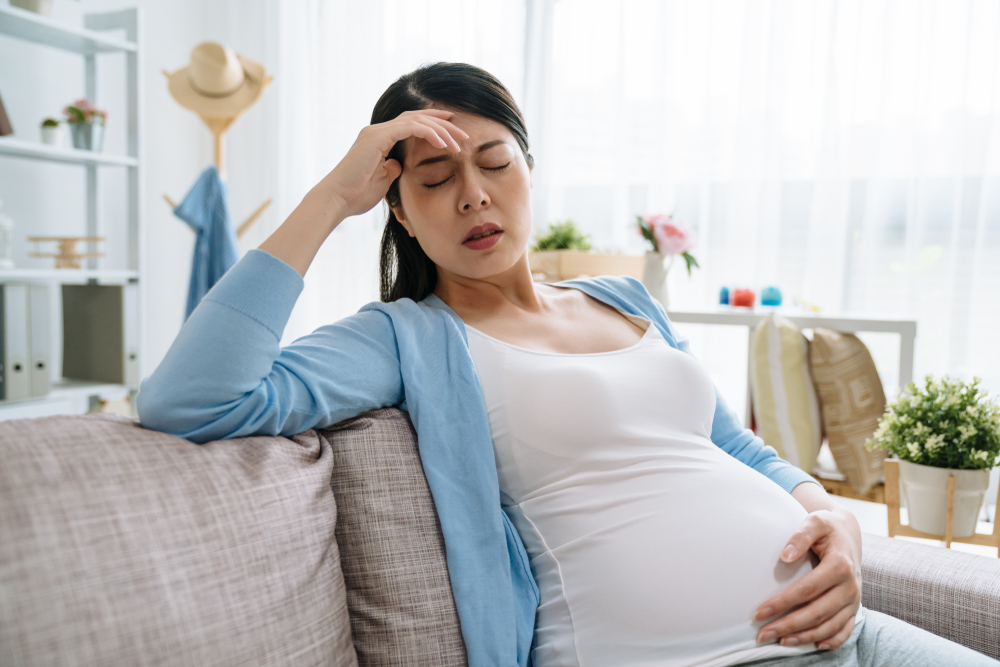Headache that occurs during pregnancy or just after birth should be carefully examined.
Headache is one of the most common complaints, especially in women of childbearing age. A Norwegian study found that 60 percent of women under the age of 40 complained of headaches in the past year. Although headache is a common problem, pain that occurs during pregnancy or just after birth needs to be examined more carefully.
In a study conducted in 2015, it was determined that 35 percent of pregnant women who applied to the emergency department with headache were related to a secondary disease (pregnancy-related hypertension). For this reason, it is necessary to examine in detail the new-onset headache, especially during pregnancy or postpartum.
Depending on the underlying problem, the severity and frequency of pain may vary. Headache that occurs after the 20th week of pregnancy or within 2 weeks after delivery may be the first sign of high blood pressure of pregnancy (preeclampsia) and related convulsions (eclampsia).
One of the reasons is pregnancy poisoning
In the evaluations, preeclampsia (pregnancy poisoning) was found in approximately one third of the cases. The pains in this group are usually widespread, constant, moderate to severe, and throbbing.
It may be accompanied by blurred vision, light sensitivity and changes in consciousness. There are similar findings in migraine-related headache. However, migraine pain is often unilateral. At this point, the diagnosis is made by looking at the systemic examination, blood pressure values and eye examination findings. However, neurological evaluation is important in headaches of pregnancy. Neurological examination results are normal as long as there is no cerebral hemorrhage in preeclampsia-induced headache.
Do not ignore these symptoms along with a headache
A doctor should be consulted immediately in the following cases:
- Confusion with headache,
- contractions (convulsions),
- ocular edema,
- Neck stiffness and neurological findings,
- Very severe onset of pain
- First appearance of migraine-like pain
- Occurrence of different severity and different from the previous pain,
- The pain is so severe that it wakes you up from sleep,
- No reduction in pain.
Migraine is most common
An underlying disease (gestational hypertension, preeclampsia…) is found in one-third of the pregnant women who apply to the physician with headache, while two-thirds of them have migraine-type pain.
The diagnosis of pregnant women with migraine-type, tension-type or cluster-type headaches is usually made before pregnancy. After excluding pregnancy-related hypertension in first-time or atypical headaches during pregnancy, half of them were migraine and the rest were tension and cluster headaches.
Migraine headaches are 70% unilateral. On the other hand, it is commonly felt in both frontal lobes or the whole head in 30 percent. It increases with routine physical activity, starts with moderate and heavy intensity, gradually intensifies, and is throbbing.
The patient flees to the dark, quiet environment. It takes 4 to 72 hours. Nausea, vomiting, sensitivity to light, intolerance to sound are usually visual precursors, sometimes accompanied by sensory or motor loss. A decrease in the frequency of pain is observed in 60-70% of those with migraine during pregnancy. However, an increase is observed in the postpartum period. Migraine attacks do not have a negative effect on pregnancy.
Differences between tension and cluster pain
Tension type pain is bilateral. It increases and decreases in case of pressure or pressure sensation. The patient is active or sometimes wants to rest. It can take from 30 minutes to 7 days. There is no other accompanying symptom. Cluster pain is always unilateral, usually starting around the eyes or temples. The pain begins quickly, intensifies within minutes, the pain is in a deep, constantly excruciating explosive style. The patient is active, the pain lasts between 15 minutes and 3 hours. On the same side, watery eyes, redness, nasal congestion, runny nose, drooping eyelids, constriction of the pupils, fatigue or agitation can be seen.
Treatment varies according to the type of pain
Neuroimaging (MR) should be used more frequently in clinical differentiation in sudden and severe onset headaches with no previous headache history. After the necessary laboratory and clinical examination in pregnant women who present with headache, the risk of gestational hypertension or eclampsia (the picture with contractions due to pregnancy tension) is eliminated, and treatment is arranged according to the type of pain with drugs that can be used during pregnancy.

